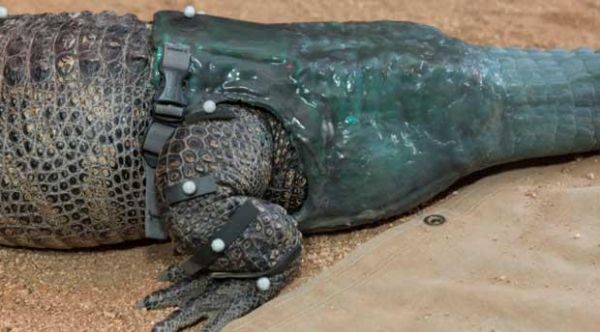 In
2013, Mr. Stubbs was an 11-year old, 7-foot long alligator living at
the Phoenix Herpetological Society in Arizona. He had lost his tail when
he was a baby, so it was very difficult for him to swim. His swimming
stroke resembled a slow dog paddle, rather than the quick, graceful
movements of a healthy alligator.
In
2013, Mr. Stubbs was an 11-year old, 7-foot long alligator living at
the Phoenix Herpetological Society in Arizona. He had lost his tail when
he was a baby, so it was very difficult for him to swim. His swimming
stroke resembled a slow dog paddle, rather than the quick, graceful
movements of a healthy alligator.Mr. Stubbs's handlers wanted to give him the freedom and ease of movement that a normal alligator has. So they built a prosthetic tail and attached it to his body.
That's not a decorative mound of rubber. It's a functional tail thoughtfully engineered to move in a manner similar to a living alligator tail. A 2013 article in USA Today (warning: auto-start video) describes it:
Using cameras and a computer, Justin Georgi, an assistant professor in the department of anatomy at Midwestern University in Glendale, Ariz., studied Mr. Stubbs for weeks. Georgi studies alligator and reptile locomotion. At times he would attach reflective dots to the gator, whose jaws were secured with electrical tape before each session. The dots would form a 3-D computer model, allowing Georgi to see exactly how Mr. Stubbs got around.
Georgi used the research to devise the tail's specifications. It had to be buoyant, and weigh just seven to nine pounds. It also had to be flexible, so when Mr. Stubbs wiggled his rear stump, the tail would swing to propel him forward.


No comments:
Post a Comment